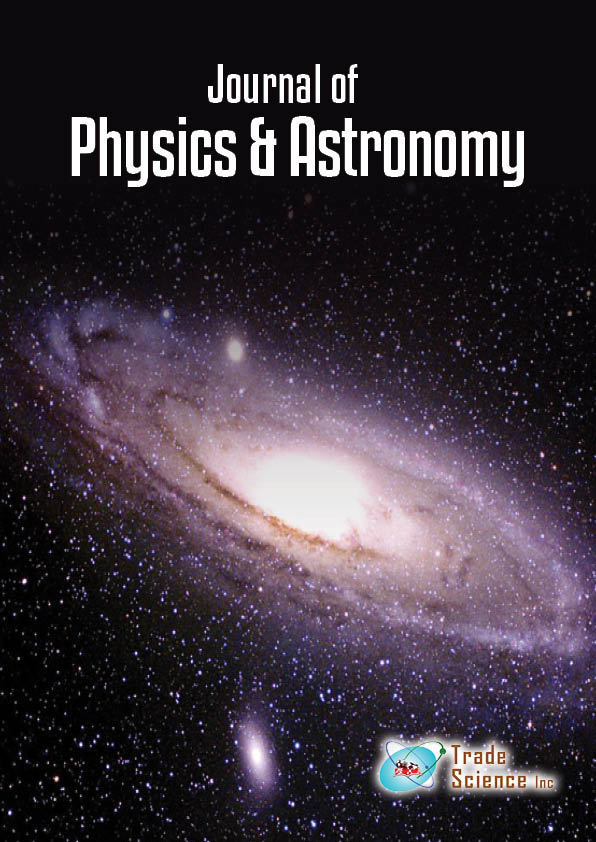Short commentary
, Volume: 6( 2)Commentary: Three-Dimensional Hybrid Silicon Nanostructures for Surface-Enhanced Raman Spectroscopy based Molecular Detection
- *Correspondence:
- Pathak AP , School of Physics, University of Hyderabad, Hyderabad 500046, Telangana, India, Tel: +91-40-2301 0181; E-Mail: appsp@uohyd.ernet.in
Received: March 19, 2018; Accepted: May 24, 2018 ; Published: May 31, 2018
Citation: Vendamani VS, Rao SVSN, Rao SV, Kanjilal D, Pathak AP. Commentary: Three-Dimensional Hybrid Silicon Nanostructures for Surface Enhanced Raman Spectroscopy based Molecular Detection. J Phys Astron. 2018; 6(2):150
Abstract
Commentary
In the quest for understanding and applying nanoscale processes, molecular detection has attained great interest due to its effectiveness in medicine, biology and pharmacology. Raman spectroscopy is one of the most reliable techniques for the identification and characterization of molecules, which has a limited capacity to detect molecules in diluted samples because of low signal yield. Surface-enhanced Raman spectroscopy (SERS) uses large electromagnetic fields produced locally by metal nanostructures to improve the Raman scattering and boost sensitivity of molecules at lower level concentrations, for example the Raman signal of standard dyes such as R6G can be enhanced by more than one billion-fold.
In the current field of molecular detection, fabrication of necessary nanostructures in SERS substrates is a challenging task. Metal nanoparticles decorated three-dimensional (3D) semiconductor nanostructures have been recognized as the promising SERS substrates for molecular detection. The superior performance of 3D SERS substrates is basically attributed to their large surface to volume ratio, which is beneficial for the formation of hotspots, and the capture of target analytes at lower concentration levels1,2. In this communication we highlight results from our recent work wherein we focused our efforts on preparing Si nanowires decorated with silver nanoparticles and achieving an ordered arrangement of high density hotspots along the third direction which were later used as SERS substrates for effective manifold molecular detection3.
Metal decorated three dimensional vertically aligned silicon nanowires are utilized for effective enhancement in the molecular detection. Recently, these results have been published in Journal of Applied Physics by AIP Publishing as referred above. In this paper we are able to enhance the Raman signal for cytosine (a nucleotide found in DNA) and ammonium perchlorate (oxidizer used in explosives composition) by a huge factor to be able to detect nM concentrations.
We had used cost effective electroless etching method to prepare tunable aspect ratio of vertically aligned silicon nanowires. The silver nanoparticles are decorated on these Si nanowires by simple two-step electroless deposition technique. The significance of this work is that we could increase the sensitivity of the molecular detection by manipulating the density of nanowires and metal nanoparticles by simple chemical route.
The SERS spectra of standard dyes such as R6G (recorded at a low concentration as 10 nM) was measured with effective enhancement factor of ~107. Furthermore, Raman enhancements of ~105 and ~104 were observed for cytosine protein and ammonium perchlorate, respectively, for higher distribution of Ag NPs decorated on the walls of Si NWs4.
The observed effective Raman enhancement factors can be attributed to the high density and uniform distribution of the Ag NPs on Si NWs. Hence, this technique can be used to push the detection limits of SERS to further lower concentrations5. Our future endeavour will be to increase the enhancement factors possibly by (a) tailoring the size and concentration of Ag nanoparticles (b) changing the plasmonic metal to Au or Ag-Au (c) increase the sharpness of the Si nanowires thereby achieving superior electric fields at the tips of NWs along with demonstrating the versatility of these targets by recording the SERS spectra of other common molecules. We expect to be able to reach nM to pM detection limits using our substrates with the above mentioned appropriate optimization procedures.
References
- Chou A, Jaatinen E, Buividas R, Seniutinas G, et al. SERS substrate for detection of explosives. Nanoscale. 2012;4:7419 -24.
- Shao MW, Zhang ML, Wong NB, et al. Ag-modified silicon nanowires substrate for ultrasensitive surface-enhanced raman spectroscopy Appl. Phys. Lett. 2008; 93:233118.
- Vendamani VS, Rao SVSN, Rao SV, et al. Three-dimensional hybrid silicon nanostructures for surface enhanced Raman spectroscopy based molecular detection.J Appl Phys. 2018;123:014301.
- Madzharova F, Heiner Z, Guhlke M, et al. Surface-Enhanced Hyper-Raman Spectra of Adenine, Guanine, Cytosine, Thymine, and Uracil J. Phys. Chem. C. 2016;120:15415?23.
- Jacobs PWM, Whitehead HM, Decomposition and combustion of ammonium perchlorate, Chem. Rev. 1969;69:551?90.

